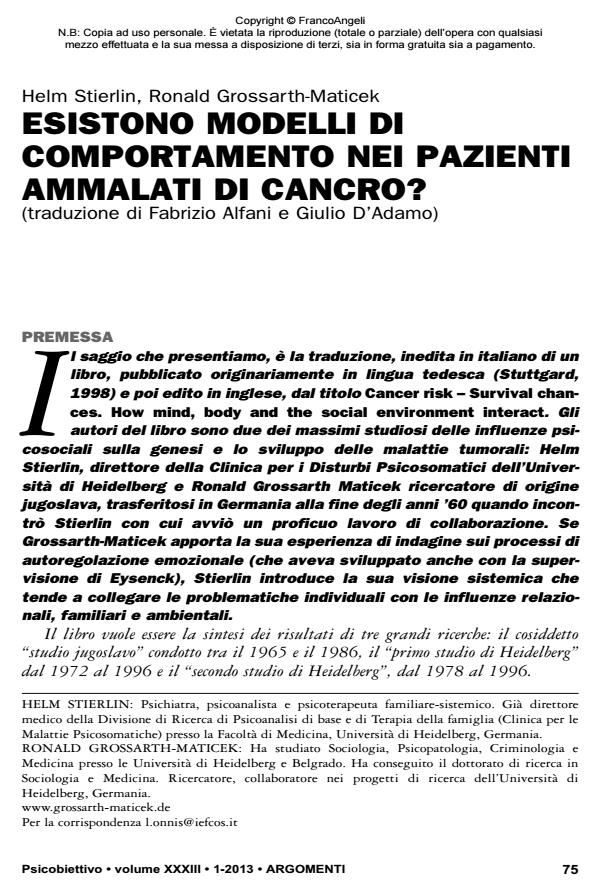Behavior patterns in cancer patients?
Journal title PSICOBIETTIVO
Author/s Helm Stierlin, Ronald Grossarth-Maticek
Publishing Year 2013 Issue 2013/1
Language Italian Pages 16 P. 75-90 File size 1155 KB
DOI 10.3280/PSOB2013-001006
DOI is like a bar code for intellectual property: to have more infomation
click here
Below, you can see the article first page
If you want to buy this article in PDF format, you can do it, following the instructions to buy download credits

FrancoAngeli is member of Publishers International Linking Association, Inc (PILA), a not-for-profit association which run the CrossRef service enabling links to and from online scholarly content.
In their text the authors intend to concentrate on behaviour patterns which are relevant for the cancer problematic or, more accurately, for the studies on the development, prevention and therapy of cancer. To identify a spectrum of potential risk factors they describe different identification strategies. The authors refer to the Type 1 pattern of behaviour, characterized by inhibition in the gratification and activation of those needs and impulses that the subjects evaluate as being selfish and egoistic. They describe the main features of a prospective intervention strategy in which two groups of people displayed more or less the same kind and incidence of cancer risk factors. One of these groups took part in a preventive therapy that aimed to improve self-regulation and autonomy.
Keywords: Cancer; Prevention; Patterns of Behaviour; Prospective Studies; Psychological Types
Helm Stierlin, Ronald Grossarth-Maticek, Esistono modelli di comportamento nei pazienti ammalati di cancro? in "PSICOBIETTIVO" 1/2013, pp 75-90, DOI: 10.3280/PSOB2013-001006